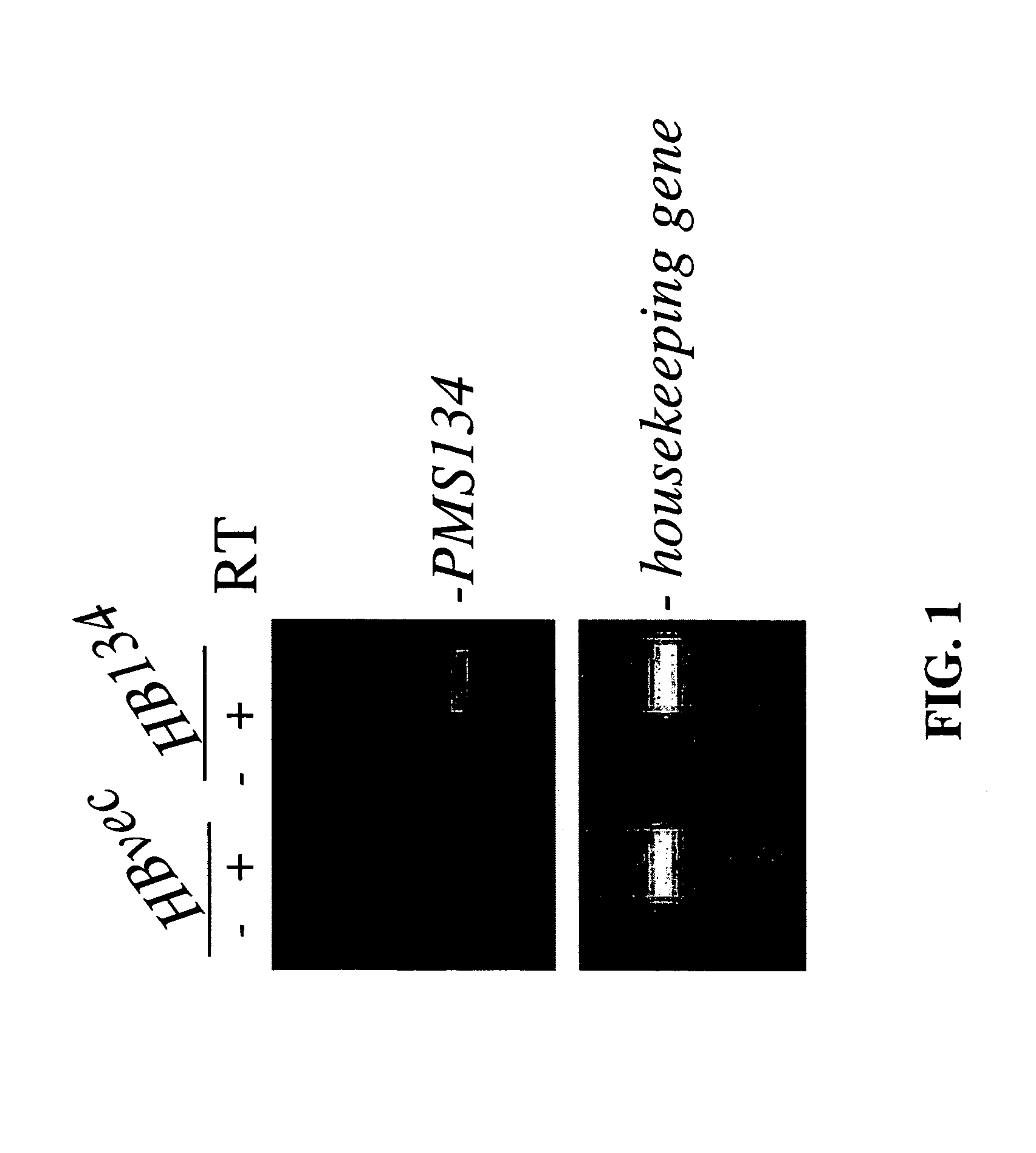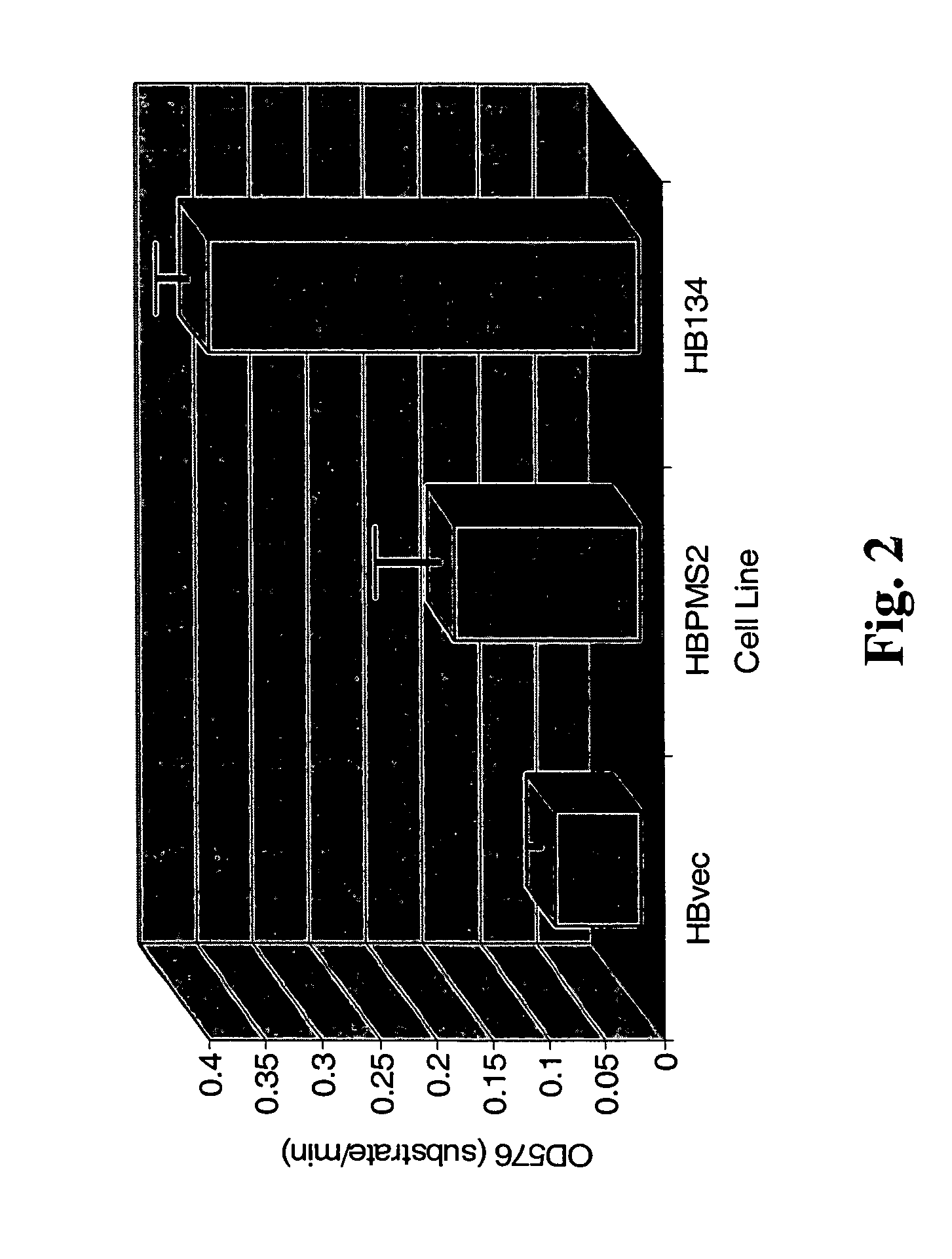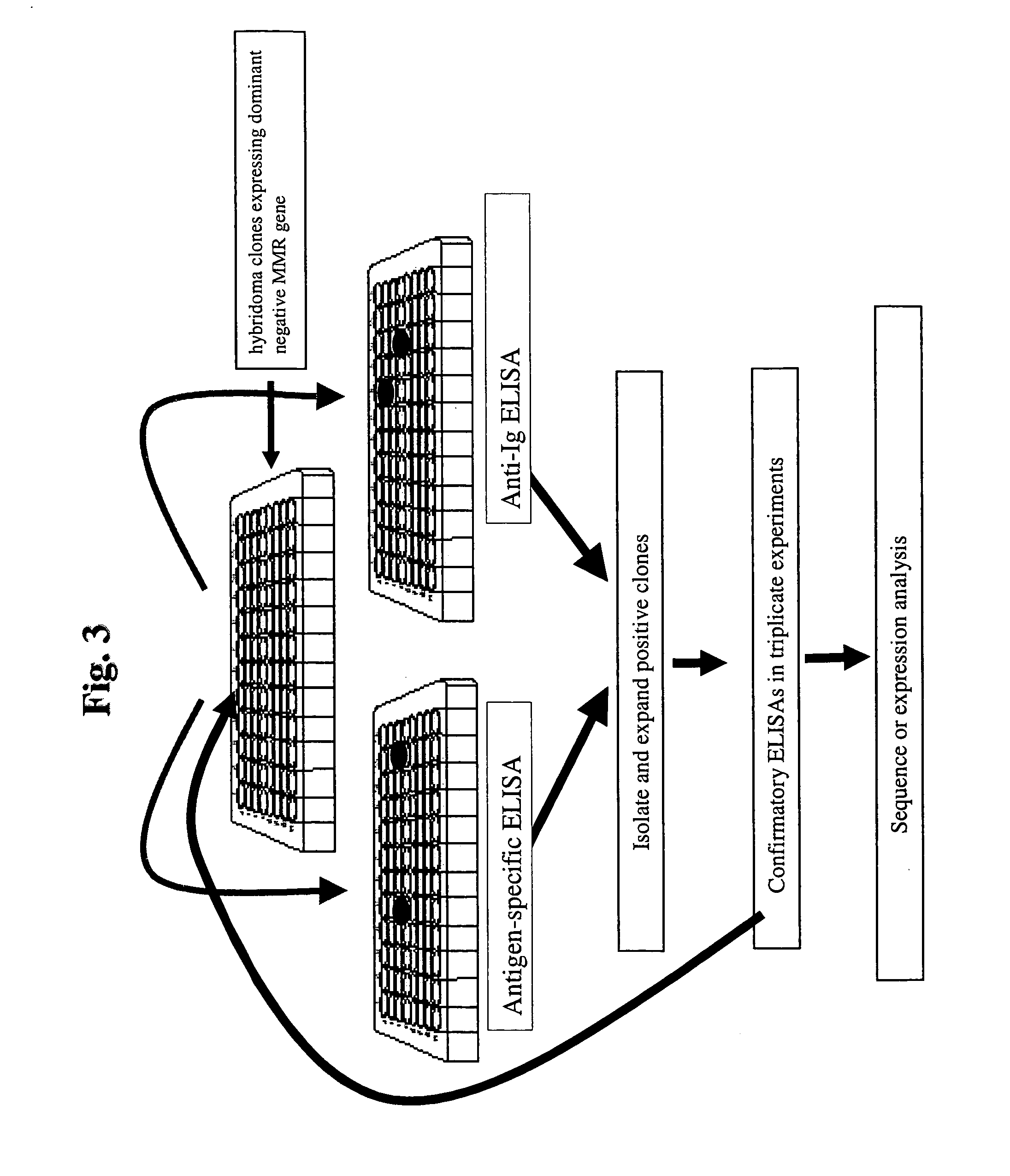Antibodies and methods for generating genetically altered antibodies with high affinity
a technology of high affinity and antibodies, applied in the field of mutagenesis, can solve the problems of loss of binding affinity due to conformational changes in the 3 process, and the hab is never restored, and achieves the effect of improving mutability in cells and beneficial pharmacokinetic profiles
- Summary
- Abstract
- Description
- Claims
- Application Information
AI Technical Summary
Benefits of technology
Problems solved by technology
Method used
Image
Examples
example 2
hPMS134 Causes a Defect in MMR Activity and Hypermutability in Hybridoma Cells
[0093]A hallmark of MMR deficiency is the generation of unstable microsatellite repeats in the genome of host cells. This phenotype is referred to as microsatellite instability (MI) (Modrich, P. (1994) Mismatch repair, genetic stability, and cancer Science 266:1959–1960; Palombo, F., et al. (1994) Mismatch repair and cancer Nature 36:417). MI consists of deletions and / or insertions within repetitive mono-, di- and / or tri-nucleotide repetitive sequences throughout the entire genome of a host cell. Extensive genetic analyses of eukaryotic cells have found that the only biochemical defect that is capable of producing MI is defective MMR (Strand, M., et al. (1993) Destabilization of tracts of simple repetitive DNA in yeast by mutations affecting DNA mismatch repair Nature 365:274–276; Perucho, M. (1996) Cancer of the microsatellite mutator phenotype. Biol Chem. 377:675–684; Eshleman J. R., and Markowitz, S. D....
example 3
Screening Strategy to Identify Hybridoma Clones Producing Antibodies With Higher Binding Affinities and / or Increased Immunoglobulin Production
[0098]An application of the methods presented within this document is the use of MMR deficient hybridomas or other immunoglobulin-producing cells to create genetic alterations within an immunoglobulin gene that will yield antibodies with altered biochemical properties. An illustration of this application is demonstrated within this example whereby the HB134 hybridoma (see Example 1), which is a MMR-defective cell line that produces an anti-human immunoglobulin type E (hIgE) MAb, is grown for 20 generations and clones are isolated in 96-well plates and screened for hIgE binding. FIG. 3 outlines the screening procedure to identify clones that produce high affinity MAbs, which is presumed to be due to an alteration within the light or heavy chain variable region of the protein. The assay employs the use of a plate Enzyme Linked Immunosorbant Assa...
example 4
Generation of Antibody Producing Cells With Enhanced Antibody Production
[0105]Analysis of clones from H36 and HB134 following the screening strategy listed above has identified a significant number of clones that produce enhanced amounts of antibody into the medium. While a subset of these clones gave higher Ig binding data as determined by ELISA as a consequence of mutations within the antigen binding domains contained in the variable regions, others were found to contain “enhanced” antibody production. A summary of the clones producing enhanced amounts of secreted MAb is shown in TABLE 2, where a significant number of clones from HB134 cells were found to produce enhanced Ab production within the conditioned medium as compared to H36 control cells.
[0106]TABLE 2. Generation of hybridoma cells producing high levels of antibody. HB134 clones were assayed by ELISA for elevated Ig levels. Analysis of 480 clones showed that a significant number of clones had elevated MAb product levels ...
PUM
| Property | Measurement | Unit |
|---|---|---|
| Volume | aaaaa | aaaaa |
| Fraction | aaaaa | aaaaa |
| Fraction | aaaaa | aaaaa |
Abstract
Description
Claims
Application Information
 Login to View More
Login to View More - R&D
- Intellectual Property
- Life Sciences
- Materials
- Tech Scout
- Unparalleled Data Quality
- Higher Quality Content
- 60% Fewer Hallucinations
Browse by: Latest US Patents, China's latest patents, Technical Efficacy Thesaurus, Application Domain, Technology Topic, Popular Technical Reports.
© 2025 PatSnap. All rights reserved.Legal|Privacy policy|Modern Slavery Act Transparency Statement|Sitemap|About US| Contact US: help@patsnap.com



